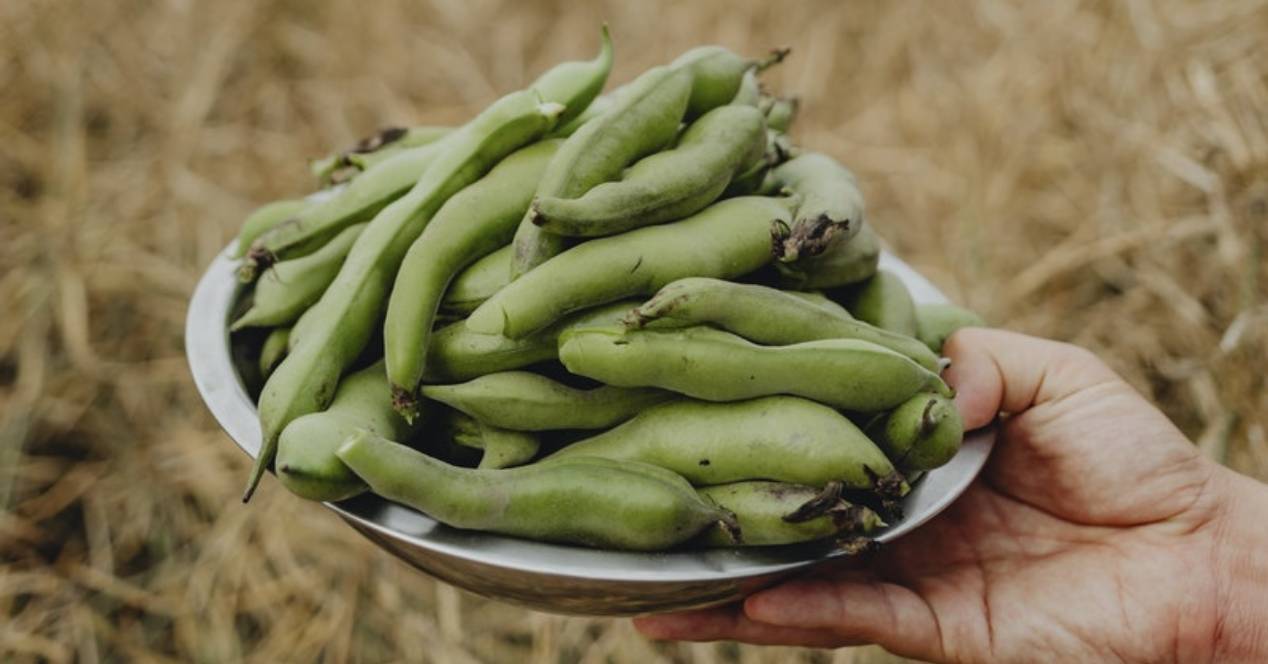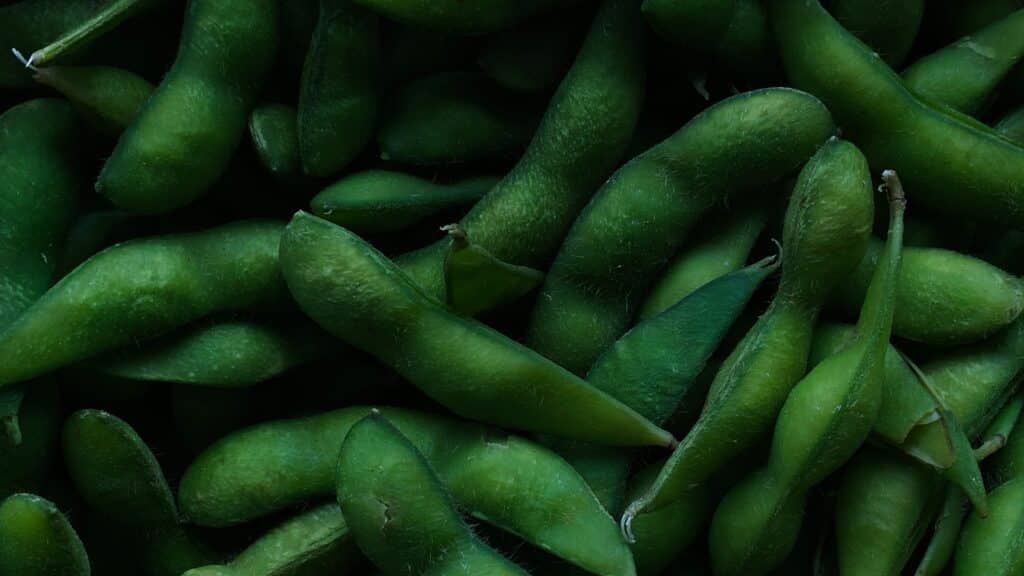
Edamame are young soybeans that are usually boiled or steamed and eaten straight from the pod. Like other beans, edamame grows in pods that enclose the edible seeds.
Soy is one of the most affordable sources of plant-based protein and is a staple in many diets around the world. They are available in both fresh and frozen forms and are nutrient powerhouses, packed with protein, fiber, vitamins and minerals, making them a delicious addition to a healthy diet.
Nutritional Information
One cup is equal to a single serving, and contains:
- Energy: 188 calories
- Total fat: 8.1 grams
- Cholesterol: 0 mg
- Sodium: 9.3 mg
- Carbohydrates: 13.8 grams
- Dietary fiber: 8.1 grams
- Sugar: 3,4 grams
- Added sugar: 0 grams
- Protein: 18,5 grams
Grease
One cup of cooked edamame contains 8 grams of fat, which is considered low fat. Of that, only 1 gram is saturated fat. Most of the rest of edamame's fat content comes from "good" monounsaturated and polyunsaturated fats.
One cup of steamed, shelled edamame contains about 3,4 grams of polyunsaturated fat, mostly in the form of omega-6 essential fatty acids. It also contains a small amount of Omega-3 fatty acids, another polyunsaturated fat. Polyunsaturated fats can help lower so-called "bad" LDL cholesterol, especially when these healthy fats replace saturated or trans fats. This can lead to a reduction in the risk of heart disease.
Carbohydrates
It has fewer carbohydrates than many other legumes. One cup of shelled steamed edamame contains almost 14 grams of carbohydrates. That compares to 40 grams of carbs for a cup of cooked lentils or beans and 45 grams of carbs for a cup of boiled chickpeas. In fact, edamame can be recommended to people with diabetes because it is very low sugar (only 3,4 grams per cooked cup of shelled beans). It is also high in fiber and protein to slow the absorption of glucose into the blood to prevent sugar spikes. Also, people who are on a low carb diet can eat edamame because it is very low in carbs, especially compared to other beans.
In addition, one cup of cooked, shelled edamame offers 8 grams of fiber, or about one-third of the recommended daily amount of fiber.
Protein
Edamame is a protein powerhouse: One cup of shelled, boiled edamame pods contains about 18,4 grams of protein. Also, soy protein is a high-quality protein, similar to animal protein in that it contains all nine essential amino acids. This is why people who follow a vegetarian or vegan diet often eat a lot of soy, including edamame.
Additionally, about a third of the calories in edamame come from protein, an additional third from carbohydrates, and the last third from fat. That makes edamame a well-balanced food to include in your diet.
Vitamins, minerals and other micronutrients
- Folate: 121% of your Daily Value (DV)
- Manganese: 69% DV
- Copper: 59% DV
- Vitamin K: 34% DV
- Thiamine (B1): 26% DV
- Magnesium: 24% DV
- Phosphorus: 21% DV
- Iron: 20% DV
- Zinc: 19% DV
- Riboflavin (B2): 18% DV
- Hill: 16% DV
- Potassium: 14% DV
- Pantothenic Acid: 12% DV
- Vitamin C: 11% DV
- Niacin (B3): 9% DV
- Vitamin B6: 9% DV
- Calcium: 8% DV
- Vitamin E: 7% DV
- Vitamin A: 3% DV

Services
Like other soy products and legumes, edamame has a rich and varied nutrient profile. It contains a wide variety of vitamins, minerals and macronutrients.
Rich in proteins
Getting enough protein is crucial for optimal health. Vegans and those who rarely eat protein-rich animal foods may need to pay extra attention to what they eat on a daily basis. One concern is the relatively low protein content of many plant foods. However, there are some exceptions.
For example, edamame is among the best sources of plant-based protein. In fact, they are the cornerstone of many vegan and vegetarian diets. One cup (160 grams) of cooked edamame provides about 18,4 grams of protein.
Additionally, soy is a complete protein source. Unlike most plant proteins, they provide all the essential amino acids the body needs.
Helps to lose weight
Edamame is an excellent source of plant protein and dietary fiber, a dynamic duo that works together to support healthy weight loss goals and maintain a healthy weight.
According to a study in the November 2018 issue of Nutrition and Diabetes, eating an advanced diet with plenty of fruits, vegetables, legumes, and nuts has been shown to be an effective strategy for obesity treatment.
Edamame and other legumes have a high protein, making them an optimal choice for vegans, vegetarians, and anyone looking to add more plant-based foods to their daily diet.
Also, eat more fiber is linked to lower body weight, according to an April 2013 study in Nutrients. Dietary fiber creates bulk and increases fecal water content, which helps keep you full and your intestinal tract working smoothly.
Fiber can also help improve glucose tolerance, increase insulin sensitivity, and is linked to reduced blood cholesterol and triglyceride levels. Increasing your fiber intake to 30 grams (or more) per day has been shown to be an effective approach to weight loss in a February 2015 study in the Annals of Internal Medicine.
Reduce symptoms of menopause
Japanese women seem to suffer fewer menopausal symptoms, specifically hot flashes, than women in other countries. A higher intake of soy, which includes a substantial amount of estrogen-like isoflavones, may be one reason for this. Therefore, researchers have explored whether soy protein can help with hot flashes.
Although results from various studies have been inconsistent, a large review of research on this topic indicates that soy isoflavone supplements may help reduce hot flashes in women around the time of menopause. However, these studies were not conducted with edamame; instead, they used isoflavones extracted from soybeans.
Improves bone health
Studies suggest that eating soy isoflavones may have a beneficial effect on bone health.
This is especially true for women who, as they age, experience an incremental loss of estrogen, which can lead to bone loss, according to an article published in the July 2016 issue of the Journal of Bone and Mineral Research.
Bone health also requires an adequate and constant supply of certain minerals, including calcium, magnesium, phosphorus, manganese, and potassium. These minerals work together to support bone homeostasis.
One cup of cooked edamame provides 8 percent, 24 percent, 21 percent, 69 percent, and 14 percent of these nutrients, respectively.
Rich in phytosterols
Edamame, as well as other legumes, seeds, and nuts, contain compounds known as phytosterols. Phytosterols have been found to have anticancer and cholesterol-lowering properties.
Phytosterols inhibit cholesterol absorption by blocking absorption sites; they are also linked to enhanced immune function and exhibit anti-cancer effects. It is not clear if these small to modest changes in cholesterol levels translate into a lower risk of heart disease.
In addition to being a decent source of soy protein, edamame is rich in healthy fiber, antioxidants, and vitamin K. These plant compounds may reduce the risk of heart disease and improve blood lipid profiles, a measure of fats, including cholesterol and triglycerides.
suitable for diabetics
Those who eat a lot of easily digestible carbohydrates, such as sugar, on a regular basis may be at increased risk of chronic disease. This is because a diet high in rapidly digesting carbohydrates leads to high blood sugar levels after meals and poor blood sugar regulation, which could increase the risk of developing health problems such as diabetes. type 2.
Like other legumes, edamame does not excessively raise blood sugar levels. It is low in carbohydrates, relative to protein and fat. It also measures very low on the glycemic index, a measure of the extent to which foods raise blood sugar levels. Therefore, it is suitable for people with diabetes.

Possible downsides
In recent years, there have been some concerns about soy-based products related to the hormone interference. Soy contains high levels of isoflavones, a type of plant estrogen that can bind to other cells in the body in the same way as human estrogen.
How this affects different people, whether by promoting estrogen or blocking estrogen, can vary widely.
However, researchers have concluded that soy is a safe, nutrient-dense protein with health-promoting benefits that outweigh any potential concern, according to the Harvard TH Chan School of Public Health.
Food allergies
Edamame, or soybeans, is one of the eight most common identified food allergens. Allergic reactions to soy can affect the skin, respiratory tract, gastrointestinal tract, or cardiovascular system and symptoms may include vomiting, gastrointestinal distress, shortness of breath, hives, swelling, or dizziness. If you have a soy allergy, avoid all soy foods and products, including edamame.
Pure soy products, including edamame, are gluten-free. Therefore, we should be able to take edamame if we have celiac disease or non-celiac gluten sensitivity. However, we must always be careful to avoid cross-contamination of gluten with soy products.
Drug Interactions
High intake of soy protein may interfere with the blood-thinning drug warfarin, according to Oregon State University.
Be sure to discuss any drug-food interactions with your trusted doctor.
Helpful tips
This food is most often and readily available in the frozen food aisle in both skin-on and skin-on varieties. You may also be able to find dried or fresh edamame at your local neighborhood market or grocery store.
El fresh it should be dark green with firm, uncut pods. It will stay fresh in the fridge for two to three days, while the frozen it will keep for up to six months.
When preparing dried edamame:
- Inspect the dried beans, looking for rocks or stones and making sure they don't break.
- Soak the pods overnight, making sure the beans are completely covered with water.
- After soaking, rinse and drain the pods until the water runs clear.
- Place in a pot, fill and cover the edamame with water, and cook over low heat until the beans are just tender, about three to four hours.
Alternatively, the dry ones can be cooked in a pressure cooker. To cook in a pressure cooker, place the edamame (no need to soak before cooking) in the pressure cooker, add eight cups of water with about 400 grams of dried edamame, and cook on high pressure for 30 minutes. Once this is done, allow the pressure to release naturally for 20 to 30 minutes.
How are they eaten?
Traditionally, it is prepared with a pinch of salt and added to soups, stews, salads, and noodle dishes, or simply eaten on its own as a snack.
Edamame is served in sushi bars and many Chinese and Japanese restaurants. We can find it in most large supermarkets in the United States, usually in the frozen vegetable section. Most health food stores also carry it.
Soy foods are controversial. Some people avoid eating soy regularly, in part because it can interfere with thyroid function. However, most studies have shown that even very high doses of soy do not appear to have a significant impact on thyroid function, although more research is needed.